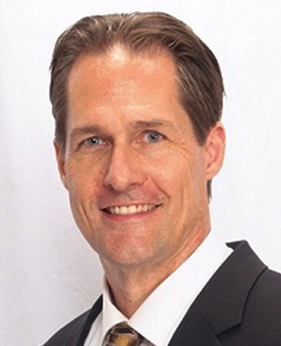
BLOG
—
Managing Surprises, Part 6 (Conclusion): Capturing Value from Lessons Learned
Every organization has its own processes, some more formal than others, for leveraging lessons learned to improve performance. With that acknowledged, process is not the focus of this blog. To close out this series on managing surprises as it began, I’d like to focus instead on mindset.
Capturing value from the lessons we have learned begins with humility. We have all probably crossed paths with technically solid but arrogant consultants. Maybe we’ve even been one, occasionally. While it’s good to approach our work with a sense of excitement about what we bring to the table, good client service also requires the discipline to be mindful of our own limitations at both individual and organizational levels.
Many years ago, I met an author/speaker named Gayle who turned out to be a great source of quotable wisdom. Gayle has a definition of humility that I’ve found very useful, “Humility is being known for who we really are.” Applying this definition to the professional realm, humility should lead us to focus our efforts on delivering services within our “strike zone,” to know and respect our limitations and to value the perspectives of others. It should also cause us to expect and be ready to adapt to new information, which brings us back to surprises.
With respect to proactively managing surprises, we can mitigate the potential impact of new information by knowing when and where to look for it and doing so early and often, beginning at the project planning stage. If at any time new information causes us to suspect we may be drifting out of our strike zone, we can call a timeout to seek additional information or other perspectives.
Capturing value also requires us to look at lessons learned in a more integrated way. Traditionally, lessons learned tend to be documented at project close-out and consequently may feel something like a footnote, or even worse, an autopsy. If we simply analyze, document and file, there’s no assurance that anything learned will ever be applied. It may just feel eerily familiar the next time it happens. Knowledge transfer—not just acknowledgment—is the key to capturing value from lessons learned.
As an alternative to the “autopsy model,” there’s a lot to be said for making room in a project kickoff meeting for a preview of relevant lessons learned. In the same way that many project meetings begin with a “safety moment,” why not include a brief “lessons learned moment”?
One of the great things I see happening as baby boomers (yes, I’m one) age out of the workforce and Gen X, Gen Z, etc., rise through the ranks is that there is a broader appreciation of mentoring value than there used to be. The mentoring that we boomers took for granted is now increasingly recognized as a valuable commodity. Some organizations feature a regularly scheduled “lunch hour story time” presented by a highly experienced professional who is nearing retirement. With a little planning, topics can be selected that are relevant to an upcoming or ongoing major project. This can be a great way to gain valuable new perspectives, since lessons learned can come not only from senior consultants, but from operators, maintenance personnel, end users and other stakeholders. Why not invite a client to come over and share a story or two over lunch?
Technology can also play a role. As demographic shifts are increasing the demand for good mentoring, technological advances are simultaneously causing the pace of life to accelerate. Consequently, traditional modes of mentoring aren’t keeping up with demand. Enter TED Talks, podcasts, online learning and (selectively) YouTube videos—even books move faster now. On any given topic, we can scan the Amazon ratings of dozens of current book titles and even turn a few pages online to confirm we’re on the right track. With a couple of clicks, we can move on to the next task and the book will be at our doorstep in a day or two.
Finally, and perhaps most importantly, capturing value from lessons learned requires that we choose individual growth and organizational improvement over blame avoidance, which is symptomatic of fear-based leadership. That kind of leadership may get short-term results, but it is deeply counterproductive if we want to create an environment that produces firmwide progress and brings out the best in each team member. (For more on this subject, I recommend picking up a copy of Simon Sinek’s “Leaders Eat Last.” You’ll be glad you did.)
By the time a project is closed out, any breakdowns or performance shortfalls in the consultant organization should have been fully addressed and followed up with the client, and lessons learned should have been captured and made available within the organization’s knowledge base in a way that future project teams can easily access. If we do this successfully, those lessons will be remembered at the right times and may not have to be relearned. We owe this not only to our clients but to ourselves and our colleagues. Everyone benefits.
When we capture lessons learned, we create opportunities to help our clients achieve organizational successes, help ourselves improve our mission performance and reinforce the business case for our clients to select us for future work. It all comes back to helping our clients look their best. When we succeed at doing that, we will generally find that our clients tend to associate looking their best with the fact that we made the journey with them—even if there were a few surprises along the way.

Lee Smith
Leland (Lee) Smith, PE, PMP, D.WRE, is an engineer program director for Woolpert’s water market and is based in the firm’s Atlanta office, where he leads project teams in problem definition, analysis and solution delivery for water infrastructure and water resource projects. Lee aspires to an increasingly client-centered approach to consulting, to foster good working relationships and support high professional standards.


